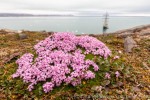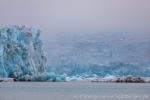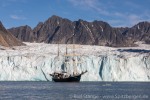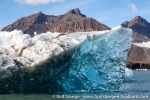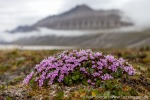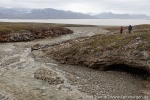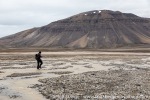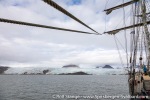-
current
recommendations- Liefdefjord
New page dedicated to one of Spitsbergen's most beautiful fjords. Background information and many photos.
- New Spitsbergen guidebook
The new edition of my Spitsbergen guidebook is out and available now!
- Liefdefjord
New page dedicated to one of Spitsbergen's most beautiful fjords. Background information and many photos.
Page Structure
-
Spitsbergen-News
- Select Month
- May 2025
- April 2025
- March 2025
- February 2025
- January 2025
- December 2024
- November 2024
- October 2024
- September 2024
- August 2024
- July 2024
- June 2024
- May 2024
- April 2024
- March 2024
- February 2024
- January 2024
- December 2023
- November 2023
- October 2023
- September 2023
- August 2023
- July 2023
- June 2023
- May 2023
- April 2023
- March 2023
- February 2023
- January 2023
- December 2022
- November 2022
- October 2022
- September 2022
- August 2022
- July 2022
- June 2022
- May 2022
- April 2022
- March 2022
- February 2022
- January 2022
- December 2021
- November 2021
- October 2021
- September 2021
- August 2021
- July 2021
- June 2021
- May 2021
- April 2021
- March 2021
- February 2021
- January 2021
- December 2020
- November 2020
- October 2020
- September 2020
- August 2020
- July 2020
- June 2020
- May 2020
- April 2020
- March 2020
- February 2020
- January 2020
- December 2019
- November 2019
- October 2019
- September 2019
- August 2019
- July 2019
- June 2019
- May 2019
- April 2019
- March 2019
- February 2019
- January 2019
- December 2018
- November 2018
- October 2018
- September 2018
- August 2018
- July 2018
- June 2018
- May 2018
- April 2018
- March 2018
- February 2018
- January 2018
- December 2017
- November 2017
- October 2017
- September 2017
- August 2017
- July 2017
- June 2017
- May 2017
- April 2017
- March 2017
- February 2017
- January 2017
- December 2016
- November 2016
- October 2016
- September 2016
- August 2016
- July 2016
- June 2016
- May 2016
- April 2016
- March 2016
- February 2016
- January 2016
- December 2015
- November 2015
- October 2015
- September 2015
- August 2015
- July 2015
- June 2015
- May 2015
- April 2015
- March 2015
- February 2015
- January 2015
- December 2014
- November 2014
- October 2014
- September 2014
- August 2014
- July 2014
- June 2014
- May 2014
- April 2014
- March 2014
- February 2014
- January 2014
- December 2013
- November 2013
- October 2013
- September 2013
- August 2013
- July 2013
- June 2013
- May 2013
- April 2013
- March 2013
- February 2013
- January 2013
- December 2012
- November 2012
- October 2012
- September 2012
- August 2012
- July 2012
- June 2012
- May 2012
- April 2012
- March 2012
- February 2012
- January 2012
- December 2011
- November 2011
- October 2011
- September 2011
- August 2011
- May 2011
- April 2011
- March 2011
- February 2011
- January 2011
- December 2010
- November 2010
- September 2010
- August 2010
- July 2010
- June 2010
- May 2010
- April 2010
- March 2010
- February 2010
- November 2009
- October 2009
- August 2009
- July 2009
- June 2009
- May 2009
- April 2009
- March 2009
- February 2009
- January 2009
- December 2008
- November 2008
- October 2008
- August 2008
- July 2008
- June 2008
- May 2008
- April 2008
- March 2008
- February 2008
- April 2000
- Select Month
-
weather information
-
Newsletter

| Guidebook: Spitsbergen-Svalbard |
Home →
Yearly Archives: 2022 − News & Stories
Woodfjord – 20th July 2022
Wed
20 Jul
2022
And again, we are lucky with wind and waves. In the sense that both of them are absent, making it possible to visit the famous hut at Gråhuken (Christiane Ritter: A woman in the polar night).
After small waterfalls falling over red rocks, surrounded by an amazing carpet of tundra and flowers, we rounded the day off at Monacobreen. Which, by the way, has recently advanced by several hundred meters. Almost hard to believe, but such things still happen occasionally, even in times of global warming.
Gallery – Woodfjord – 20th July 2022
- gallery anchor link: #gallery_2321
Click on thumbnail to open an enlarged version of the specific photo.
Northwest Spitsbergen – 19th July 2022
Tue
19 Jul
2022
A rare beautiful day on the northwest corner of Spitsbergen, where it usually tends to be grey, windy and cold. Nothing of that sort today. Instead, stunning views over Danskøya and later, more stunning views, walruses and whaling history at Smeerenburg.


West coast – 18th July 2022
Mon
18 Jul
2022
We were blown out of Kongsfjord, but the sails made it easily possible to turn it into a situation of great fun.
Another kind of great fun came later in the afternoon when we were unexpectedly able to make one of those rare landings on the exposed outer coast. Fantastic weather, stunning scenery … what else could you ask for?
And even more of it in the evening in Magdalenefjord. Weather, scenery, calving activity at the glacier … all at a maximum!
Gallery – West coast – 18th July 2022
- gallery anchor link: #gallery_2318
Click on thumbnail to open an enlarged version of the specific photo.
Kongsfjord – 17th July 2022
Sun
17 Jul
2022
Wind and the presence of other ships made things a bit uncertain in Ny-Ålesund to begin with, but then we could spend a brilliant morning there, in Spitsbergen’s northernmost settlement, currently also frequently visited by polar bears. We could see at least 3 of them on islands near town.
Later we explored inner Kongsfjord. One of the most beautiful parts of Spitsbergen, if you get there on a day like this.
Gallery – Kongsfjord – 17th July 2022
- gallery anchor link: #gallery_2315
Click on thumbnail to open an enlarged version of the specific photo.
Forlandsund
Sun
17 Jul
2022
Since last night, we have got not only as many as 19 passengers on board, but also a new Captain (Jonathan should have left a week ago – thank you for staying that long!). Amazing! Full ahead, northwards!
So we could enjoy the first day outside Isfjord today 🙂 in Forlandsund. Stunning landscape, stunning weather, stunning wildlife! Just have a look at the photos.
Gallery Forlandsund, 16th July 2022
- gallery anchor link: #gallery_2312
Click on thumbnail to open an enlarged version of the specific photo.
Sveabreen & Longyearbyen
Fri
15 Jul
2022
Everybody was happy to see some sun again finally, at Sveabreen.
And everybody was even more happy to welcome some more people on board in Longyearbyen. Especially those who came on board. They should have come almost a week ago! Well, better late than never – welcome onboard!
It took some more time until everything and everybody were in place. We made good use of the time with a choice of hikes in the vicinity of Longyearbyen. Below some impressions from our excursion into Adventdalen.
Gallery Sveabreen & Adventdalen, 14th/15th July 2022
- gallery anchor link: #gallery_2309
Click on thumbnail to open an enlarged version of the specific photo.
Ekmanfjord
Thu
14 Jul
2022
Coraholmen is a perl of nature in Ekmanfjord. A part of the island is a moraine landscape, kind of what I imagine it would look like on Mars. Not that I have been there. Just my fantasy. But anyway, Coraholmen is a fascinating island, even on a grey day like this. Stunning atmosphere!
The same applied to Blomesletta later. It was actually so foggy that we waited some time before we went out again, strengthened by some good cheese cake. A great walk, great views!
Gallery Ekmanfjord: Coraholmen & Blomesletta, 13th July 2022
- gallery anchor link: #gallery_2306
Click on thumbnail to open an enlarged version of the specific photo.
Gipsdalen & Diabasodden
Tue
12 Jul
2022
As mentioned before, Isfjorden has more than enough place for a week or ten days. Today we were in Sassenfjord (a part of Isfjord, obviously). The weather remained grey, but that didn’t kept us from getting out. We went for a lovely hike in the beautiful, large Gipsdalen, where William S. Bruce looked for coal in his days a long time ago, and later we paid a visit to the Brünich’s guillemots at Diabasodden.
Gallery Gipsdalen & Diabasodden, 12th July 2022
- gallery anchor link: #gallery_2303
Click on thumbnail to open an enlarged version of the specific photo.
Ebbadalen & Pyramiden
Tue
12 Jul
2022
A slightly grey day in northern Billefjord, in the beautiful Ebbadalen and in Pyramiden. Fascinating places, beautiful scenery, friendly reindeer.
Gallery Ebbadalen & Pyramiden, 11th July 2022
- gallery anchor link: #gallery_2300
Click on thumbnail to open an enlarged version of the specific photo.
Longyearbyen, Skansbukta
Tue
12 Jul
2022
So Antigua is setting sail again in Spitsbergen in July – our first long trip (18 days!) with good old Antigua in 3 years (because of Covid). Amazing …
But, alas, not everybody could make it to Longyearbyen, because of the SAS pilot strike. We still maintain hope to pick some more people up in a couple of days time, but for now, we sail with 10 passengers instead of a good 30 …
But in any case, we sailed! And we set course for Skansbukta, to start with. We will stay in Isfjorden for a couple of days, making sure that we can pick people up at any time. No problem at all, Isfjorden is more than big enough to spend a week or even more.
Gallery Longyearbyen-Skansbukta, 09th/10th July 2022
- gallery anchor link: #gallery_2297
Click on thumbnail to open an enlarged version of the specific photo.
SAS pilots on strike
As if 2 years of Covid-19 were not enough for all who want to or who need to travel: pilots of SAS are on strike since negotiations scheduled until yesterday (Monday) failed. Up to 250 SAS flights are expected to be cancelled now every day as long as the strike lasts.
That includes flights to and from Longyearbyen.

SAS, please find a solution, asap!
Russian delivery stopped – Russia reacts with irritation and cyberattacks
It is an issue that has kept Norway and Russia busy already for some weeks: a delivery for Barentsburg, said to include mainly food, is kept on hold at the border between Russia and north Norway. The delivery was to be transported over land to Tromsø and from there by ship to Barentsburg.

Barentsburg during brighter times (here in 2019).
But due to the sanctions introduced after the Russian war of aggression and destruction began in February, Norway does not allow the goods into the country. The Spitsbergen treaty guarantees all signatory parties – this includes Russia – free access to Svalbard, but according to Norwegian authorities, this does not automatically include the right to chose a route through the Norwegian mainland. Norwegian officials say that Russia at any time has the opportunity to ship goods from their own harbours to Barentsburg. Svalbard ports are not included in the ban on Russian ships in Norwegian ports, and officials indicate that Norway would consider an excemption to the ban on Russian planes on Norwegian airports if the Russian side filed an application for a flight to Longyearbyen.
The Russian reaction is mainly irritation, political threats – recently, Russian representatives have repeatedly pointed out that Norway breaks the Spitsbergen treaty – and allegedly cyberattacks. There have been several cyberattacks on public Norwegian websites recently, which Norwegian authorities associate with Russian hacker groups, according to Svalbardposten and other Norwegian media channels.
At some stage, Russian representatives raised concerns about a serious shortage of supplies in Barentsburg, which was described as an overreaction by Norway. Now it is said that the supply in Barentsburg is stable, due to deliveries from other sources, according to NRK.
Bird flu detected in Spitsbergen
Bird flu, also known as avian flu or avian influenza, has been detected in Spitsbergen in June for the first time. It is the first evidence for this virus in the Arctic.
Scientists expected the arrival of the bird flu virus in Svalbard now because of a major recent outbreak of the disease amonst Barnacle geese in England and Scotland. Birds from this population migrate up to Svalbard to breed there during the summer. You can see Barnacle geese and others, mainly pink-footed geese, in and near Longyearbyen in large numbers in the early summer before they spread to the breading areas.

Barnacle geese are potential carriers of the bird flu virus (here in Ny-Ålesund).
The bird flu virus was now found in a dead glaucous gull that was found near the harbour in Longyearbyen, as NRK reports.
Bird flu is highly infectious and very dangerous for birds, both wild and domestic ones. Experts fear potentially disastrous consequences for domestic bird stocks in mainland Norway and wild bird populations both there and in Svalbard.
Report to the Sysselmester if you find a dead bird or an alive one that shows strange behaviour, but do not touch or handle dead birds or bird droppings. The risk of an infection for humans, however, is described as low.
Norwegian government dispossesses foreigners of local voting rights
After a long and controversial political process, the Norwegian government in Oslo has now made the decision that non-Norwegian inhabitants of Longyearbyen will lose the voting right (active and passive) on a community level. Only those “foreigners” (people without Norwegian passports) who have lived at least 3 years in a mainland community will be able to vote or to be elected into the community council (Longyearbyen Lokalstyre).
This applies to approximately 700 inhabitants of Longyearbyen. There is currently one member of Lokalstyre who has a passport other than Norwegian (Olivia Ericson from Sweden), according to NRK.
This had been a very controversial and, for some, emotional debate which was already subject of several earlier contributions on this page; read the previous article (click here) for more background, e.g. on the history of local democracy in Longyearbyen.
It is safe to assume that most non-Norwegian citizens have not spent 3 years as a registered inhabitant of a Norwegian mainland community. Many locals who have spent a major part of their lives in Longyearbyen will not be allowed to vote during the next local elections (in 2023) and they may not be elected into Lokalstyre.
The recent governmental decision frustrates many who are concerned; many feel like second-class citizens now, as Svalbardposten reports.
Minister of justice Emilie Enger Mehl gives the following explanatory statement (quoted from the press release of the Norwegian government, link above, my own translation): “The connection to the mainland makes sure that those who manage the community at any time have good knowledge and a good understanding of Svalbard politics and the (political) framework that is applied to Svalbard … considerable resources are transferred every year from the mainland to support public services and infrastructure. Inhabitants with mainland connection will often have contributed to these finances. The requirement for a mainland connection is also to be seen in this light.”

Longyearbyen is becoming more Norwegian. Exclusion of non-Norwegian inhabitants from local democracy is a price that the Norwegian government is appearently willing to pay.
Comment
So far so clear: those who (potentially) have paid are to decide; those who have paid potentially less (local taxes are low) and to not have the right passport are excluded from political participation where it really matters.
Longyearbyen Lokalstyre is a community council and no more than that. Lokalstyre’s decisions concern local traffic, kindergarten, school, other local infrastructure – just what a community council generally does, and no more than that. Lokalstyre does not have any influence in national legislation – beyond trying to be heard, which too often does not happen, otherwise the decision in question would not have happened as it did. Lokalstyre does not make decisions concerning Svalbard outside the community of Longyearbyen.
So one may ask what kind of problem the Norwegian government assumes to solve. Or, same question in other words: what are they afraid of? So far, Longyearbyen Lokalstyre is firmly in Norwegian hands. There is currently exactly one local council member who is not Norwegian, and that is Olivia Ericson from Sweden. Who is afraid of Olivia? And even if, one future day, Danes and Swedes, Germans and Thai would make up a visible proportion of Longyearbyen Lokalstyre and thus have a say in matters concerning local road building of kindergarten – so what?
Last year, a local council member of Høyre (“Right”) said something like “This is about security. Thus, we can not make any compromise.”
It would be interesting to know more about where politicians from the quoted local council member up to Minister of justice Emilie Enger Mehl see Norwegian security threatened.
Let’s just assume they would be able to give a convincing answert to this question (noting that nothing points to this actually being the case): the current decision is, at best, preventive. As mentioned, there is currently exactly one local council member who is not Norwegian, and nothing points towards an increasing trend of international diversity in Lokalstyre.
For this preventive measure, the Norwegian government is willing to pay a high price – or rather, to let others pay the price: the exclusion of a large group from local democracy. Many of those feel like second class citizens now.
Norwegian politicians usually not let an opportunity pass unused to point out that Svalbard and Longyearbyen are Norwegian (and I haven’t heard anyone questioning this, with some exceptions of bizarre claims made by Sovjet/Russian politicians, but that’s a totally different issue and by no means relevent in a local democracy context). But suddenly, Longyearbyen is not Norwegian enough to give those who have been living there for years good knowledge of the Norwegian political framework for Svalbard policy? That is, in my opinion, bizarre.
Justizministerin Mehl said (author’s translation): “Nobody is excluded from the democratic process, but you must have lived on the mainland for 3 years to be elected into Lokalstyre.” (Svalbardposten).
It is hard to say what is more worrying. That the government plainly ignores most of the opinions being raised during the public hearing – the voices from Longyearbyen where by far singing the same song of democracy and political participation.
Or that Mehl pretends that nobody is excluded from the democratic process while this is exactly what happens, which is either a concerning lack of knowledge or plainly false. There are very few non-Norwegian inhabitants of Longyearbyen who have spent at least 3 years as registered inhabitants of a mainland community. And the desire to do this has probably not grown for many whom the Norwegian government has now given the finger. This may be perceived as a strong description of the recent decision, but this is exactly how those who are directly concerned may well feel about it (so does this author, in any case).
Which other modern, democratic, European country has retreived lcoal voting rights from foreign inhabitants who used to have these rights before, some for many years? This decision apperas politically disgusting, right-wing nationalist and xenophobic. With this decision, the Norwegian government has joined a circle of European governemnts where, I am sure, they do not wish to see themselves.
MS Virgo back in Longyearbyen
MS Virgo, which hit a rock in Fuglefjord, is back in Longyearbyen. She is said to have done the passage under her own power, but accompanied by the coastguard to assist if needed.
Coastguard divers made an attempt to repair the hull damage temporarily, but it is said that this did not work. Polarsyssel, the governor’s vessel, pumped fuel from Virgo‘s damaged tank.

MS Virgo in Longyearbyen, today (Thursday) morning.
There is no further information available at the moment, nothing about the extent of damage, the volume of diesel that may have been lost in Fuglefjord and escaped into the environment or why and how exactly the grounding happened.
News-Listing live generated at 2025/May/03 at 05:52:59 Uhr (GMT+1)


